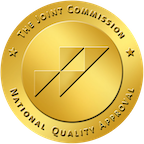Skip To Rehab Listing
With addiction treatment easily available, those struggling with drug and alcohol abuse can find assistance within their local area.
Addiction Treatment Facility Settings and Treatment Methods In The Dalles
The types of treatment programs in The Dalles include the following: long term treatment facilities, short term addiction treatment centers, outpatient detoxification facilities, outpatient hospital programs, inpatient drug rehab facilities.
Those looking for rehab can find conveniently located centers nearby with a variety of recovery methods made for effective recovery. These methods, which include both well-established and recently developed methods, include the following: matrix model, anger management, trauma-related counseling, relapse prevention, brief intervention approach, dialectical behavior therapy.
Programs Addressing Special Requirements for Addiction Treatment
Dependency can vary based upon circumstances, like the kind of substance driving the addiction. Many recovery centers in the The Dalles region provide rehabs purposed to customize rehabilitation to a client's unique needs. These rehabs are comprised of the following: clients referred from the court/judicial system, persons with post-traumatic stress disorder, transgender or (LGBT) clients, programs for the hearing impaired, residential beds for client's children, suicide prevention services.
Patients who are not sure what their requirements are can reach out to these rehabs to get patient services that can guide them toward the right program.
Paying For Recovery - Payment Options & Alternatives
Individuals struggling with drug and alcohol use come from varied financial conditions, but a variety of payment alternatives makes rehabilitation financially accessible for anyone. Payment opportunities include the following: private insurance, cash or self-payment, sliding fee scale, payment assistance, state corrections or juvenile justice funds, state welfare or child and family services funds.
People searching for rehab can get in touch with a rehabilitation program to learn more about what financing options are available to them.
The Dalles, Oregon's substance abuse facilities, services, and payment alternatives offer people who are struggling with alcohol and drug abuse an opportunity to begin a sustainable sobriety plan.
Commonly Asked Questions about Addiction and Treatment
How to talk to a family member about their addiction to drugs?
When addressing a family member's addiction to drugs, it is essential to approach the conversation with empathy, understanding, and a non-judgmental attitude. Here are some steps to consider when discussing this sensitive topic:
- Educate yourself: Before initiating the conversation, educate yourself about addiction, its causes, and available treatment options. This knowledge will help you better understand the situation and provide accurate information to your family member.
- Choose the right time and place: Find a suitable environment where both of you can have a private and uninterrupted conversation. Pick a time when your family member is sober and relatively calm, as it increases the chances of having a productive discussion.
- Express concern and love: Begin the conversation by expressing your genuine concern and love for your family member. Use "I" statements to convey your feelings without sounding accusatory. For example, say, "I've noticed some changes in your behavior, and I'm really worried about you."
- Use non-confrontational language: Avoid blaming or criticizing your family member, as it can lead to defensiveness and hinder the conversation. Instead, use non-confrontational language to express your observations and concerns. Focus on their well-being and the impact their addiction may be having on their life and relationships.
- Active listening: Encourage your family member to share their feelings, thoughts, and experiences regarding their addiction. Practice active listening by giving them your undivided attention, maintaining eye contact, and offering supportive responses. Show empathy and try to understand their perspective without judgment.
- Offer help and support: Let your family member know that you are there to support them through their journey to recovery. Provide information about available resources, such as local support groups, counseling services, or addiction treatment centers. Offer to accompany them to appointments or assist in finding suitable treatment options.
- Establish boundaries: While offering support, it is crucial to establish clear boundaries to protect yourself and other family members from enabling or codependent behaviors. Make it clear that you will not tolerate or participate in any activities that enable their addiction.
- Encourage professional help: Suggest the importance of seeking professional help from addiction specialists or therapists. Assure your family member that seeking help is a sign of strength, and it can greatly improve their chances of recovery.
- Avoid enabling behaviors: It's important not to enable your family member's addiction by providing financial assistance or covering up the consequences of their actions. Enabling can perpetuate the cycle of addiction and hinder their motivation to seek help.
- Self-care: Supporting a family member with addiction can be emotionally challenging. Take care of your own well-being by seeking support from friends, support groups, or therapists. Remember that you cannot control or fix their addiction, but you can offer love, support, and encouragement.
Is there Government assistance to pay for rehab?
Yes, in the United States, there are several forms of government assistance that can help pay for rehab.
Medicaid: Medicaid is a state and federal program that provides health coverage for some low-income people, families and children, pregnant women, the elderly, and people with disabilities. Many states' Medicaid programs provide coverage for a range of substance use disorder services, including detoxification, outpatient counseling, residential treatment, medication-assisted treatment, and more. The specific services covered and eligibility criteria can vary by state.
Medicare: Medicare, a federal program primarily for people age 65 and older, also provides coverage for some substance use disorder treatment. This can include inpatient rehab, outpatient treatment services, and medication-assisted treatment.
The Affordable Care Act (ACA): The ACA, also known as Obamacare, requires health insurance plans sold on the Health Insurance Marketplace to cover substance use disorder services. This means that individuals who purchase insurance through the Marketplace can access rehab services, often at a lower cost due to income-based subsidies.
Substance Abuse and Mental Health Services Administration (SAMHSA): SAMHSA offers grants to states and organizations to provide treatment and recovery services for individuals with substance use disorders. Individuals may be able to access services funded by these grants at little or no cost.
State and Local Government Programs: Many states and localities have their own programs to help residents access substance use disorder treatment. These programs may offer direct funding for treatment, operate state-funded treatment facilities, or provide vouchers to pay for private treatment.
Veterans Affairs (VA): The VA provides a range of substance use disorder treatment services to eligible veterans, including detoxification, rehab, outpatient counseling, and medication-assisted treatment.
Indian Health Service (IHS): The IHS provides a comprehensive health service delivery system for approximately 2.6 million American Indians and Alaska Natives, including services for substance use disorders.
Facts about fentanyl
Fentanyl is a powerful synthetic opioid analgesic that has garnered significant attention in recent years due to its role in the opioid crisis. Here are some essential facts about fentanyl:
Potency: Fentanyl is estimated to be 50 to 100 times more potent than morphine and 25 to 50 times more potent than heroin. Due to its high potency, it is prescribed in micrograms (mcg) rather than the milligrams (mg) typically used for other opioids.
Medical use: Fentanyl is primarily used in medical settings to manage severe pain, such as chronic pain or breakthrough pain in cancer patients. It is also used as an anesthetic during surgical procedures. Fentanyl is available in various forms, including transdermal patches, lozenges, tablets, and injections.
Illicit use: Fentanyl has become a significant concern in the illicit drug market due to its potency and relatively low production cost. Illegal fentanyl is often mixed with other drugs, such as heroin, cocaine, or counterfeit prescription pills, increasing the risk of overdose for unsuspecting users.
Overdose risk: Fentanyl's potency makes it particularly dangerous, as even a small amount can cause an overdose. Signs of fentanyl overdose include slow or shallow breathing, unresponsiveness, pinpoint pupils, cold and clammy skin, and loss of consciousness. Fentanyl overdoses can be fatal if not promptly treated.
Naloxone: Naloxone, also known as Narcan, is an opioid antagonist that can rapidly reverse the effects of a fentanyl overdose by displacing the drug from the opioid receptors in the brain. Due to fentanyl's potency, multiple doses of naloxone may be necessary to reverse an overdose effectively.
Fentanyl analogs: There are numerous fentanyl analogs or derivatives, such as carfentanil, acetylfentanyl, and furanylfentanyl. These analogs can have varying potencies, often significantly stronger than fentanyl itself, which can further increase the risk of overdose and fatalities.
Legal classification: Fentanyl is a Schedule II controlled substance in the United States, indicating that it has a high potential for abuse and dependence but also has accepted medical uses. Illicit fentanyl and its analogs are often classified as Schedule I substances, indicating that they have no accepted medical use and a high potential for abuse.
Addiction and dependence: Fentanyl, like other opioids, carries a risk of addiction and physical dependence. Chronic use can lead to tolerance, requiring higher doses to achieve the same effect, and withdrawal symptoms if usage is reduced or stopped abruptly.













